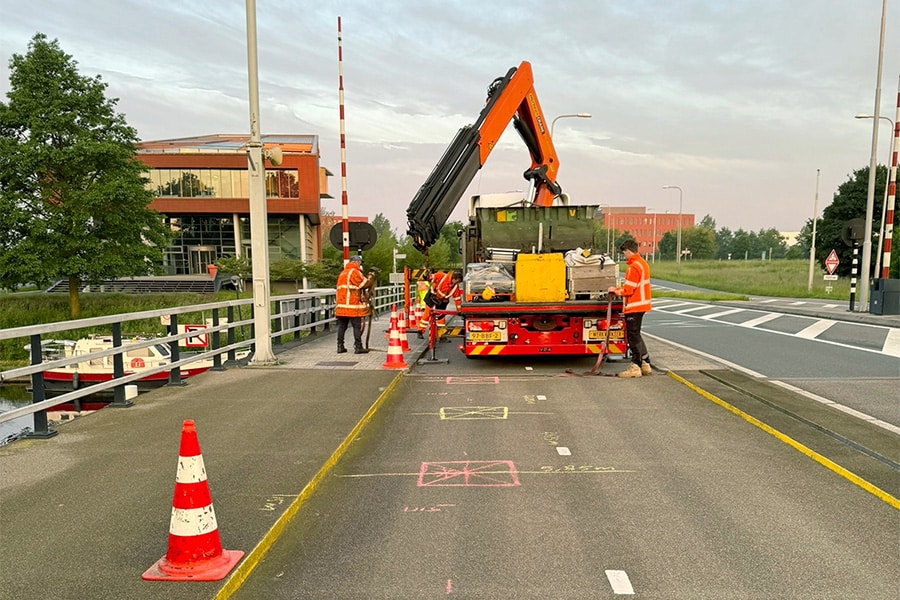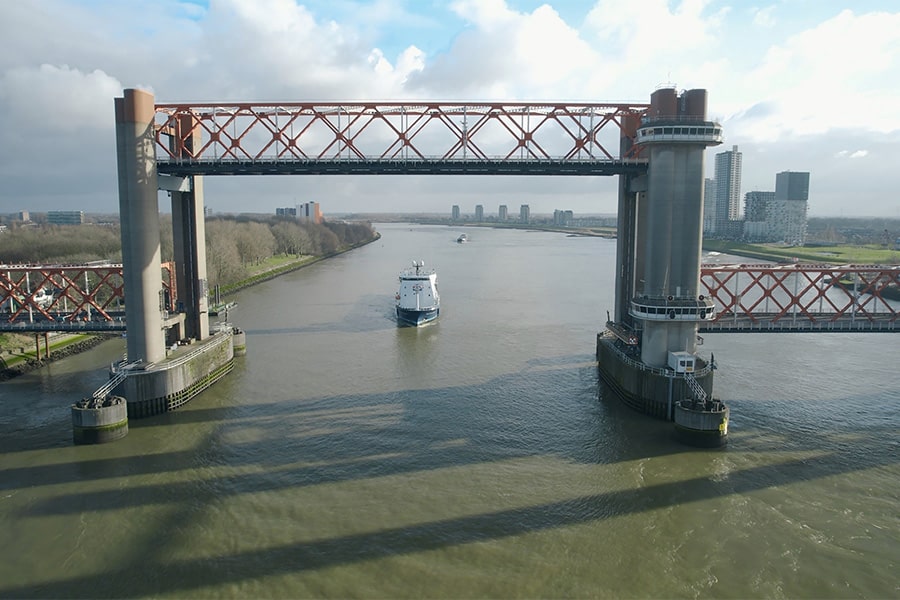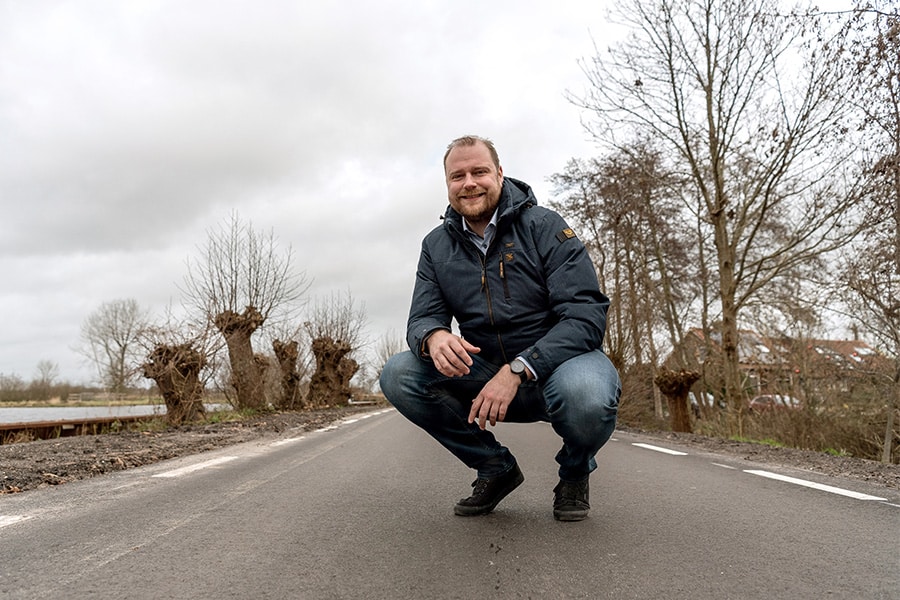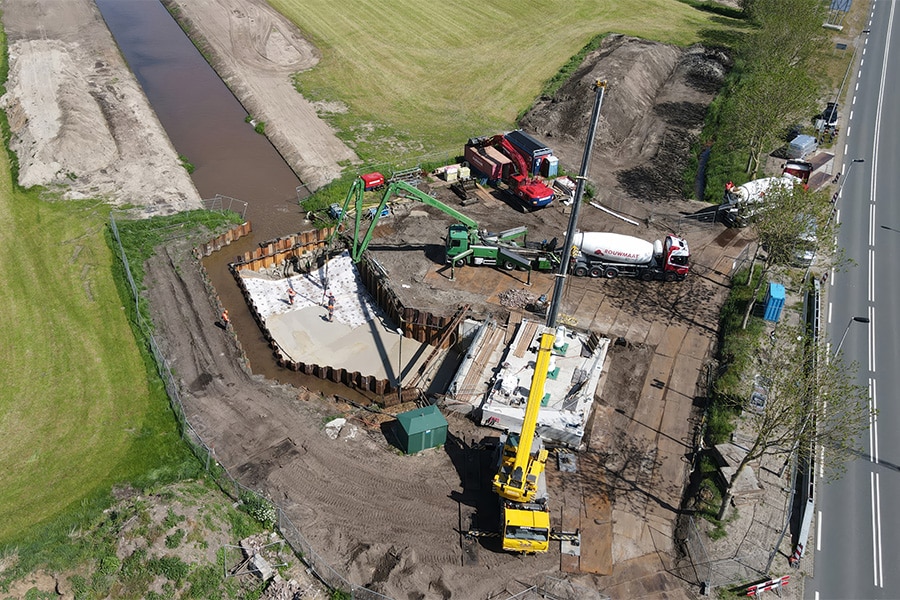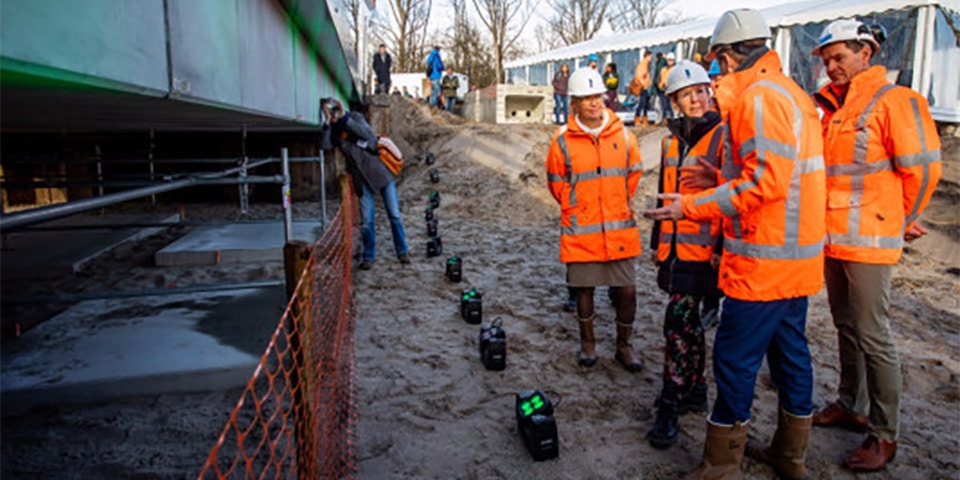
State secretary IenW opens first circular viaduct
Opening during Week of the Circular Economy
Today, State Secretary for Infrastructure and Water Management Stientje van Veldhoven opened the Netherlands' first concrete circular viaduct. She did so on the first day of the Week of the Circular Economy. The viaduct was recently installed near Kampen and is an initiative of Rijkswaterstaat, contractor Van Hattum en Blankevoort (VolkerWessels) and precast builder Consolis Spanbeton.
Circular is the future
We only have one earth, Van Veldhoven emphasized during her speech. "And it simply does not have an infinite amount of raw materials: we have to make do with what we have here. Reuse of materials is the future. This way we also contribute to the climate goals of this government. From now on our raw materials will no longer come from an oil drum but from the dustbin."
First circular viaduct
The deck of the circular viaduct consists of 40 concrete elements and can be completely and intactly dismantled, moved and rebuilt in a new location. "This way there is no waste, no new raw materials are needed and used raw materials are reused in the highest quality way," said Esther van Eijk of Van Hattum en Blankevoort. "Whereas regular viaducts are demolished after 30 to 50 years, the lifespan of the circular viaduct is about 6 times longer at 200 years. It is the first concrete viaduct in the Netherlands to be built in this way."
Innovative design
Several circular principles were applied in the innovative design of the viaduct. "What is special, for example, is that the elements interlock like 'LEGO blocks' with lugs, that the prestressing cables are not collapsed and that the joints used between the concrete elements can release again," says Kees Quartel of Consolis Spanbeton. "As a result, the elements do not have to be demolished when dismantled, and can be reused intact. Moreover, by working with elements, new viaducts can be built with the same 'building blocks' that vary in length and width."
Test circular viaduct
In the coming months, the three cooperation partners will test this first prototype of the circular viaduct on a work site between Kampen and Dronten. The work site has been set up for the construction of the Reeve Lock - part of the Room for the River IJsseldelta project. Work traffic uses the viaduct there. Extensive monitoring will keep an eye on how the viaduct behaves. The test data will be used in the further development of the circular viaduct.
Start learning environment circular viaducts
To enable large-scale application of circular viaducts, Rijkswaterstaat is creating a learning environment together with Van Hattum en Blankevoort and the Construction Campus. The kick-off meeting of this took place immediately after the opening of the circular viaduct. Director-General Blom of Rijkswaterstaat explains, "Within the learning environment, the currently available knowledge of clients, infrastructure companies and knowledge institutions will be brought together. The goal is to come to agreements and common principles together for the further development of the current concepts that currently exist in the market. Civil builders and road authorities who also have good ideas for this, we call on them to join and also contribute to the development of the circular viaduct."
Working together equally
Rijkswaterstaat has the role of launching customer in the partnership and in the learning environment, seeking to start a movement. Rijkswaterstaat does this by supporting companies in further developing a joint concept. Director General Blom: "To accelerate circular innovations, Rijkswaterstaat wants to be involved earlier and more closely in their development. Cooperation on an equal footing throughout the chain is necessary to make fully circular construction possible."
Circular working in 2030
With the realization of the first circular viaduct of the Netherlands, the three partners contribute in an innovative way to the sustainable ambitions of Rijkswaterstaat and the Netherlands. Namely: 49% less CO2 emissions (compared to 1990) and circularity in 2030.
